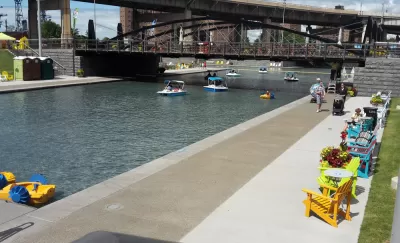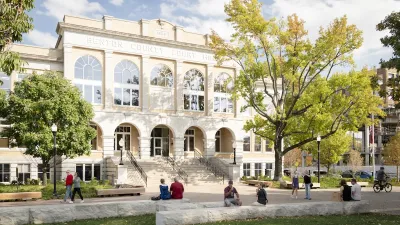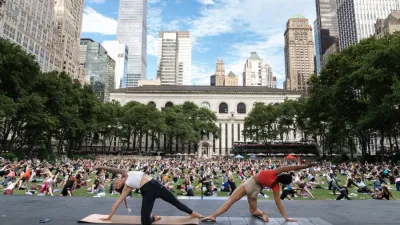New qualitative research into three example public spaces in the United States offers best practices and obstacles to avoid in the placemaking process.

Nate Storring, deputy director of Project for Public Spaces, writes for the Brookings Institution blog, The Avenue, to provide a list of "takeaways" generated by a recent qualitative study into the holistic effects of three public spaces in the United States.
The research in question is a recent entry in the Bass Center for Transformative Placemaking research series titled "Beyond traditional measures: Examining the holistic impacts of public space investments in three cities." Researchers Hanna Love and Cailean Kok qualitatively examined public spaces in Flint, Mich., Buffalo, N.Y., and Albuquerque, N.M. "to shed new light on these questions and chart a path forward for more equitable and effective placemaking," explains Storring.
Storring focuses on four main takeways from the research, with more detail included in the source article below:
- Public space for 'everyone' don't work for everyone.
- Placemaking needs thoughtful place governance to sustain itself
- When it comes to money, 'how' sometimes matters more than 'how much'
- The future of public spaces is qualitative
On this last point, Storring notes that the groundbreaking observational research techniques pioneered by William H. Whyte and Jan Gehl "to track the number and kinds of people in a space and how they use it" offer a baseline of research that nevertheless fails to capture key issues, such as public perception, interpersonal interactions, and broader benefits to public health, the economy, and the environment. "Since then, academic research on public spaces has continued to evolve, with a growing emphasis on qualitative techniques," according to Storring.
FULL STORY: Four takeaways on public space investment for placemakers

Alabama: Trump Terminates Settlements for Black Communities Harmed By Raw Sewage
Trump deemed the landmark civil rights agreement “illegal DEI and environmental justice policy.”

Planetizen Federal Action Tracker
A weekly monitor of how Trump’s orders and actions are impacting planners and planning in America.

The 120 Year Old Tiny Home Villages That Sheltered San Francisco’s Earthquake Refugees
More than a century ago, San Francisco mobilized to house thousands of residents displaced by the 1906 earthquake. Could their strategy offer a model for the present?

In Both Crashes and Crime, Public Transportation is Far Safer than Driving
Contrary to popular assumptions, public transportation has far lower crash and crime rates than automobile travel. For safer communities, improve and encourage transit travel.

Report: Zoning Reforms Should Complement Nashville’s Ambitious Transit Plan
Without reform, restrictive zoning codes will limit the impact of the city’s planned transit expansion and could exclude some of the residents who depend on transit the most.

Judge Orders Release of Frozen IRA, IIJA Funding
The decision is a victory for environmental groups who charged that freezing funds for critical infrastructure and disaster response programs caused “real and irreparable harm” to communities.
Urban Design for Planners 1: Software Tools
This six-course series explores essential urban design concepts using open source software and equips planners with the tools they need to participate fully in the urban design process.
Planning for Universal Design
Learn the tools for implementing Universal Design in planning regulations.
Jessamine County Fiscal Court
Caltrans
Institute for Housing and Urban Development Studies (IHS)
City of Grandview
Harvard GSD Executive Education
Toledo-Lucas County Plan Commissions
Salt Lake City
NYU Wagner Graduate School of Public Service





























